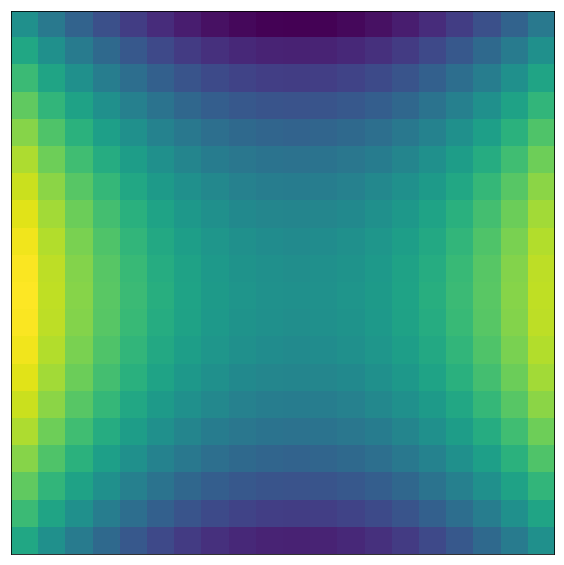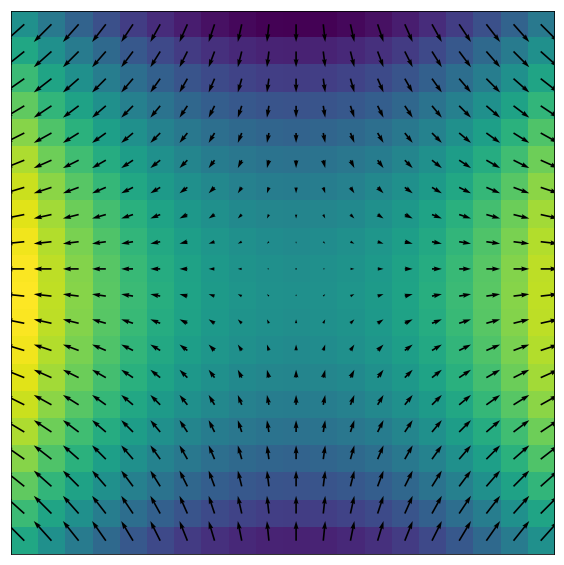Visualizing Gradients with Quiver
A gradient is used to find the slope of a multi-dimensional field by the relationship
\nabla F = \frac{\partial F}{\partial x} \hat{x} + \frac{\partial F}{\partial y} \hat{y} + \frac{\partial F}{\partial z} \hat{z}Slopes (derivatives) in one dimension are easily shown on a plot, where the sign of the values shows the direction, but this doesn’t work in multiple dimensions. In 2-dimensions, slopes can be visualized as a vector field with vectors pointing in the direction of “up” with a length proportional to the magnitude of the slope.
Let’s create a field following the function f(x,y) = x^2 - y^2.
import matplotlib.pyplot as plt
import numpy as np
from numpy import ma
%matplotlib inline
X, Y = np.meshgrid(np.arange(-10, 10, 1), np.arange(-10, 10,1))
field = X**2-Y**2
plt.imshow(field);

The gradient is \nabla f(x,y) = 2x \hat{x} - 2y \hat{y}. We can create the parameters U and V for that hold the \hat{x} and \hat{y} components of the gradient, respectively, and plot them with quiver.
U = 2*X
V = -2*Y
plt.imshow(field, extent=(-10.5,9.5,-10.5,9.5))
Q = plt.quiver(X, Y, U, V, units='width')
qk = plt.quiverkey(Q, 0.9, 0.9, 2, r'$2 \frac{m}{s}$', labelpos='E',
coordinates='figure')

You can see the arrows are pointing from lower to higher values (darker to lighter), in the direction of the maximum positive slope.